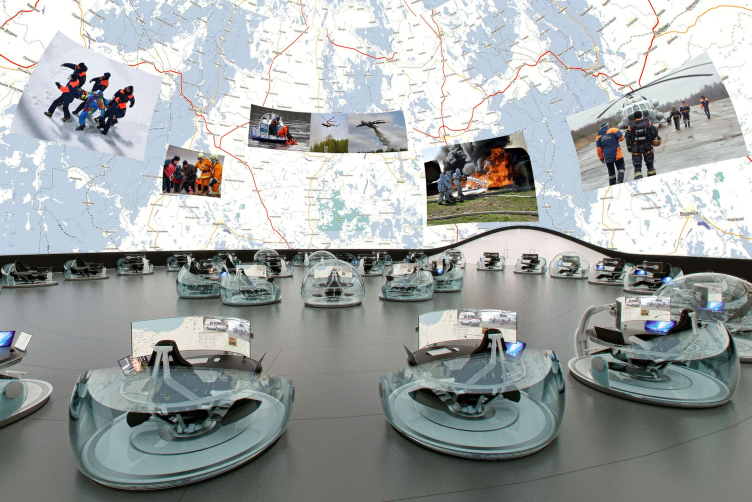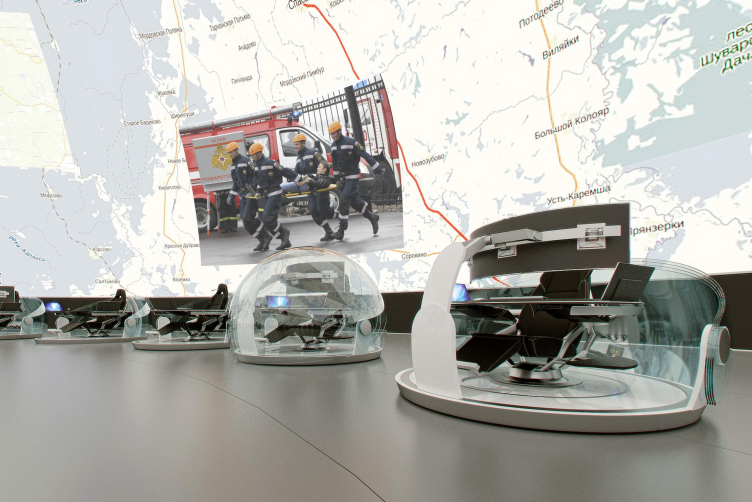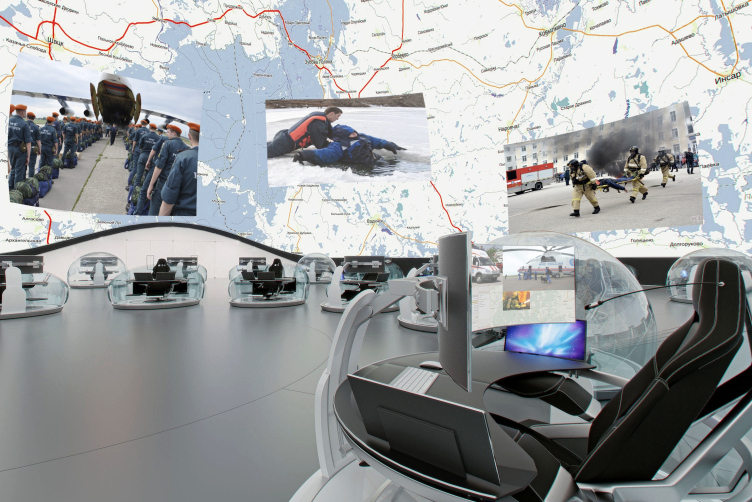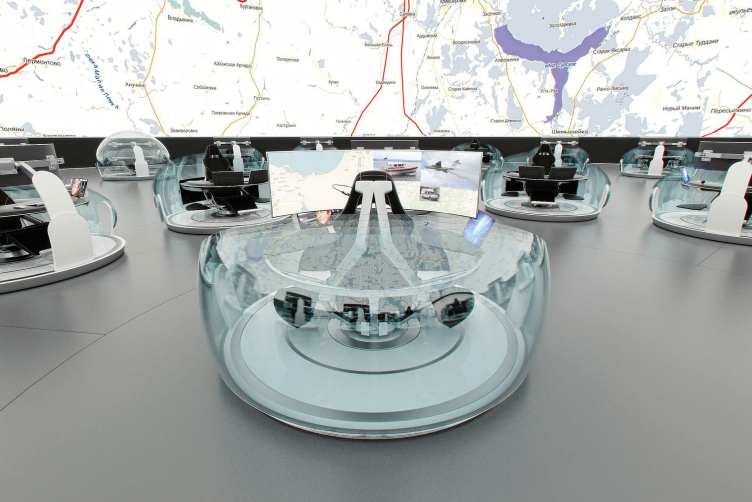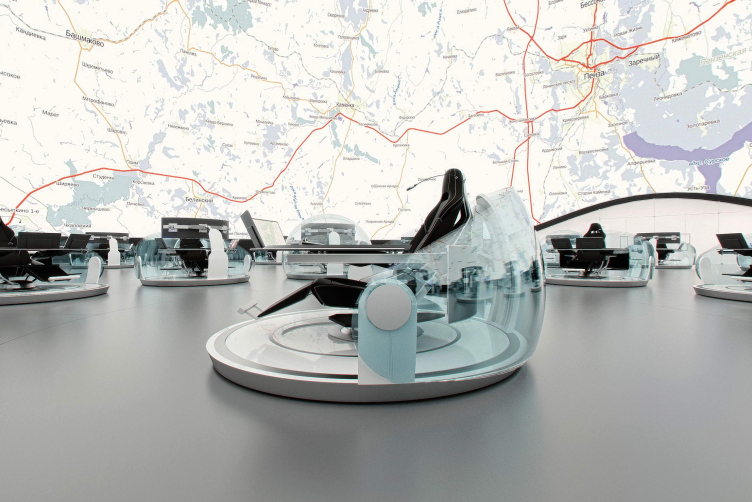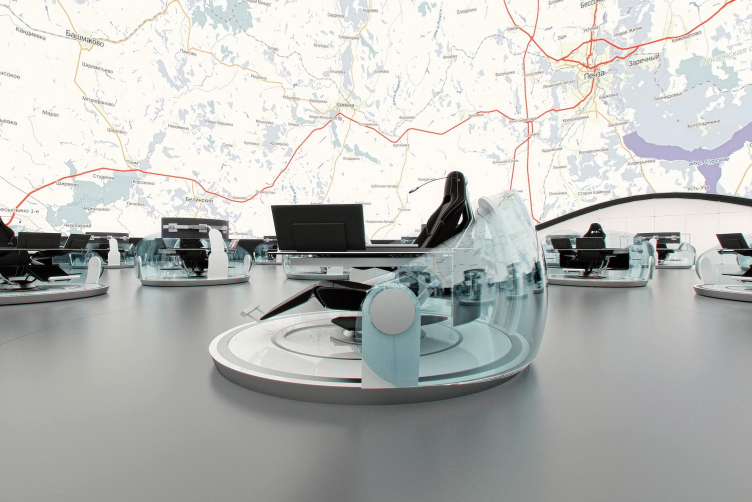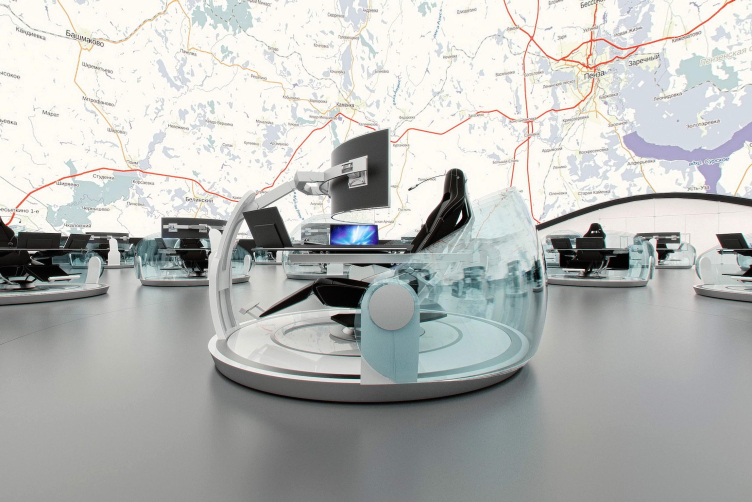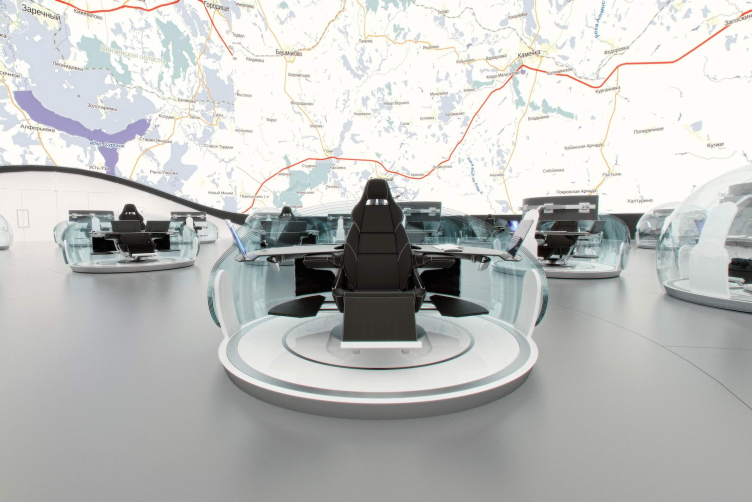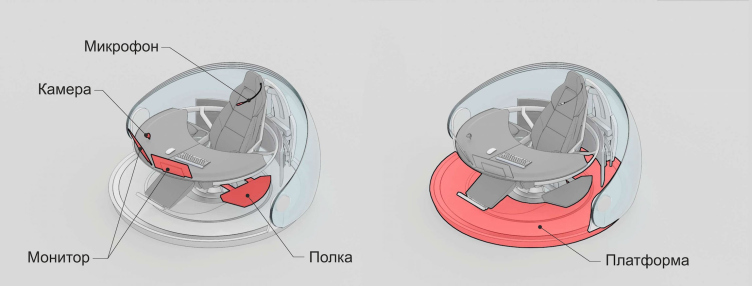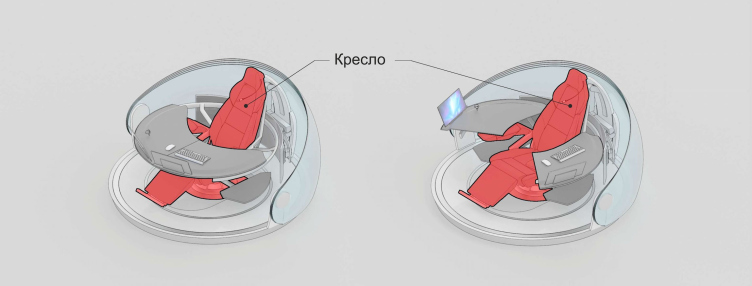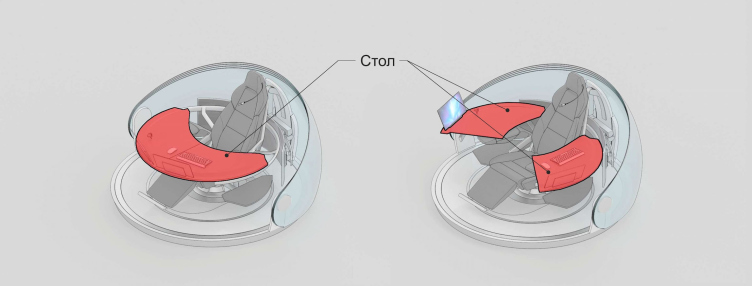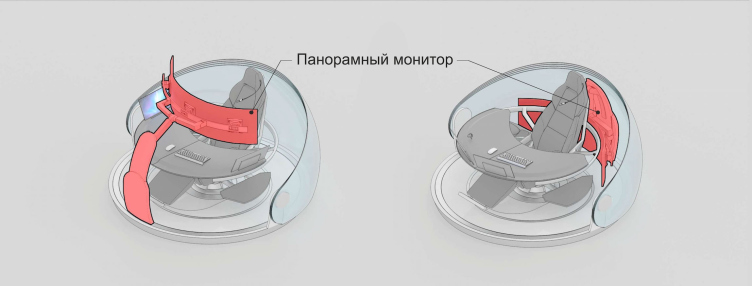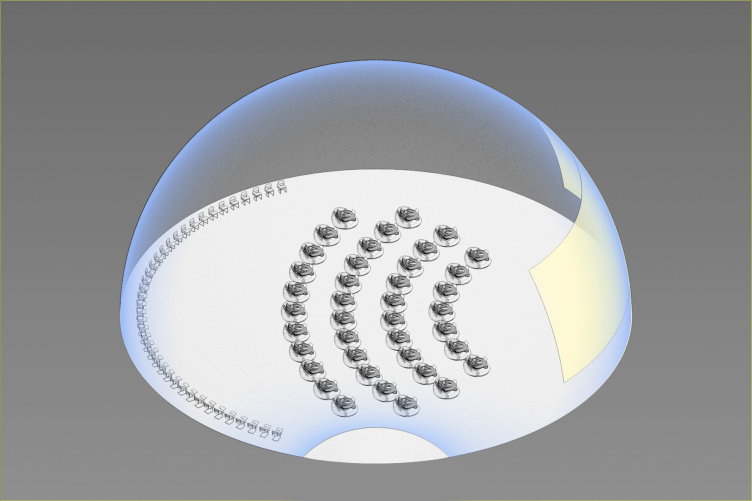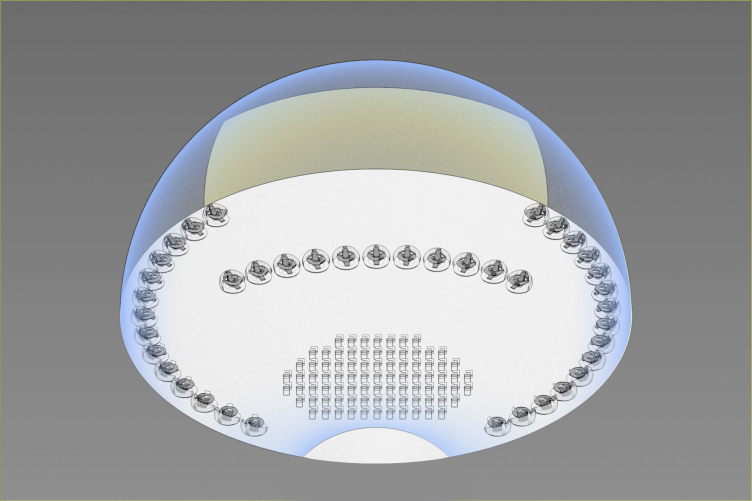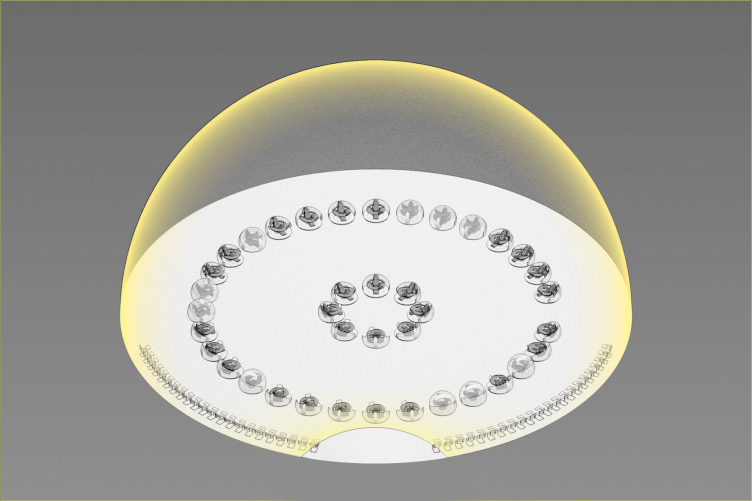The history of planning interior designs for control rooms and management centers began more than ten years ago for the architects of Arch group, when they started modernization of control rooms of the System Operator of the Unified Power System. Some countries of that time already applied various new technologies, for example, display cubes that showed large seamless images with high resolution. Russia of the early 2000 used outdated devices, such as walls with blinking red and green bulbs. The wish to modernize management centers of large companies of our country coincided with automation of the main production processes. At that, the company owners realized that they not only needed a hi-tech space, but also an image-building one. This was how Alexey Goryainov and Mikhail Krymov discovered a completely new scope of activity – which turned out to be quite exciting.
The first implemented project of this kind was a control room in St. Petersburg – a spacious and light room dazzling with its futuristic style. The architects started experimenting right away proposing the boldest innovational solutions. For example, instead of a display cube, which requires a separate room, they developed a display wall that looked like a giant 9x4 meters TV-screen. They also applied unique sound-absorbing constructions solving in this way the matter of noise insulation and keeping stable temperature. The control room has been effectively in operation for about ten years. After the first successful implementation, the demand for such projects rose rapidly – orders piled up before Arch group. The architects developed a whole series of technologically complex projects. By now, over fifteen of them have been executed.
Alexey Goryainov tells that having mastered in this new direction and gained enough experience they wanted to create a sort of ideal model of a universal control center that, at the same time, would be most possibly simple, functional and practical. That was when they came up with the idea of taking the existing EMERCOM hall with its giant semi-spherical wall as a basis and inventing something absolutely new for it, something unique that has no analogues in the world, but can be brought to life. The idea was shared with the staff of the ministry and was immediately supported. “They were ready to implement all the newest and most interesting ideas, since their technological base was being modernized at the time” – Goryainov says.
The concept of National Crisis Management Center of EMERCOM of Russia © Arch group
The concept of National Crisis Management Center of EMERCOM of Russia © Arch group
The concept of National Crisis Management Center of EMERCOM of Russia © Arch group
The concept of National Crisis Management Center of EMERCOM of Russia © Arch group
The concept of National Crisis Management Center of EMERCOM of Russia © Arch group
The main space-forming component and simultaneously the main technological know-how of the project is the display cupola covering the whole room. The idea of such a dome arrived from the necessity of showing the map of the world in large scale and undistorted, since significant distortions cannot be avoided on a flat map, and a display wall – even a very large semicircular one – is not seen equally well by all employees and has distortions. On the contrary, the image on the dome is like the sky of stars over your head – available to all and in full view. It is similar to a planetarium; among themselves, the authors call the room “a planetarium-like control room”. To create a high-quality image, the authors suggest using LED matrixes and similar technologies, as an alternative to the projecting camera, which also remains in operation. The height of the cupola has been selected according to the scale of the most commonly used maps. Certain groups of staff can have additional, smaller images displayed in the selected part of the cupola.
The concept of National Crisis Management Center of EMERCOM of Russia © Arch group
The concept of National Crisis Management Center of EMERCOM of Russia © Arch group
Another innovation of the project is the concept of a standalone, mobile workplace. Instead of a table and a chair, the authors proposed a semi-spherical glass module on a flat round foundation that contains everything required for the operator’s work. When necessary, the spherical transparent shell isolates the operator from the external noise allowing to concentrate on the task. When the capsule is fully closed special equipment ensures comfortable temperature in it. Inside of the sphere is a transformable armchair reminding a car seat that can change position from upright to fully horizontal. Lying back in the chair one can comfortably observe the map up above. In the sitting position, the user faces a large panoramic screen that partly substitutes the cupola, which allows to operate in standalone mode. When the screen is not required it can be easily hidden behind the back of the seat – the screen can move in all directions along the surface of the module.
The concept of National Crisis Management Center of EMERCOM of Russia © Arch group
The concept of National Crisis Management Center of EMERCOM of Russia © Arch group
The concept of National Crisis Management Center of EMERCOM of Russia. Model of the workplace © Arch group
The small module intended for one person is filled with electronic devises. All the modules are mobile and can rotate around their axis and move around the hall following the given scenario. It solves the problem of most control centers that have to be provided with special meeting rooms and conference-halls. By a signal, the glass capsules can line up along the perimeter of the hall, build up groups, activate mode of meeting, press conference, presentation or round-table discussion. In regular situations, the operators can communicate through video-calls.
The concept of National Crisis Management Center of EMERCOM of Russia. Model of the workplace © Arch group
The concept of National Crisis Management Center of EMERCOM of Russia. Model of the workplace. Section view, plan © Arch group
The project has not been implemented yet: the client admired the proposed idea and currently the project is being analyzed and the next step is yet being postponed. Despite the apparent futuristic design concept – the presented interior reminds a picture from sci-fi movies rather than today’s realia – the authors insist on its reality. According to the words of Alexey Goryainov, the most difficult element is the module. However, the authors have already found a potential manufacturer that agreed to create a prototype of this technically complex and unusual equipment. They even managed to calculate the approximate cost and thought of alternative application variants – there are countless possible modifications, since the module is very variable. So, the concepts has prospects. The authors make no question of the fact that they managed to create an ideal and universal control room. The architects are sure that this concept can become the new standard for different control rooms all around the world and help in performing tasks in all possible areas.
The concept of National Crisis Management Center of EMERCOM of Russia. Model of the workplace. Connection system in the hall © Arch group
The concept of National Crisis Management Center of EMERCOM of Russia. Model of the workplace © Arch group
The concept of National Crisis Management Center of EMERCOM of Russia. Model of the workplace © Arch group
The concept of National Crisis Management Center of EMERCOM of Russia. Model of the workplace © Arch group
The concept of National Crisis Management Center of EMERCOM of Russia. Diagram © Arch group
The concept of National Crisis Management Center of EMERCOM of Russia. Diagram © Arch group
The concept of National Crisis Management Center of EMERCOM of Russia. Diagram © Arch group
The concept of National Crisis Management Center of EMERCOM of Russia. Diagram © Arch group
The concept of National Crisis Management Center of EMERCOM of Russia. Diagram © Arch group
The concept of National Crisis Management Center of EMERCOM of Russia. Diagram © Arch group




